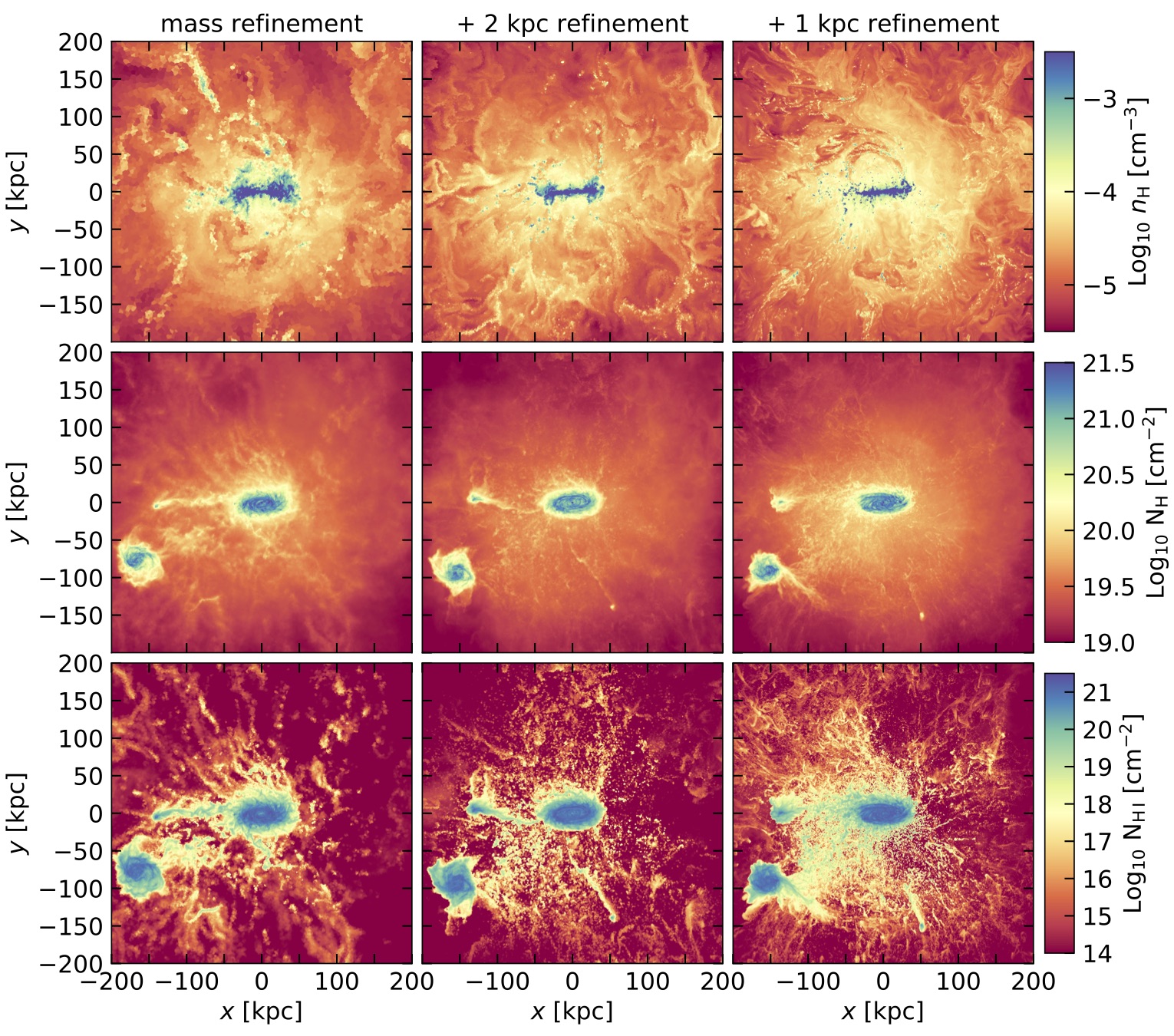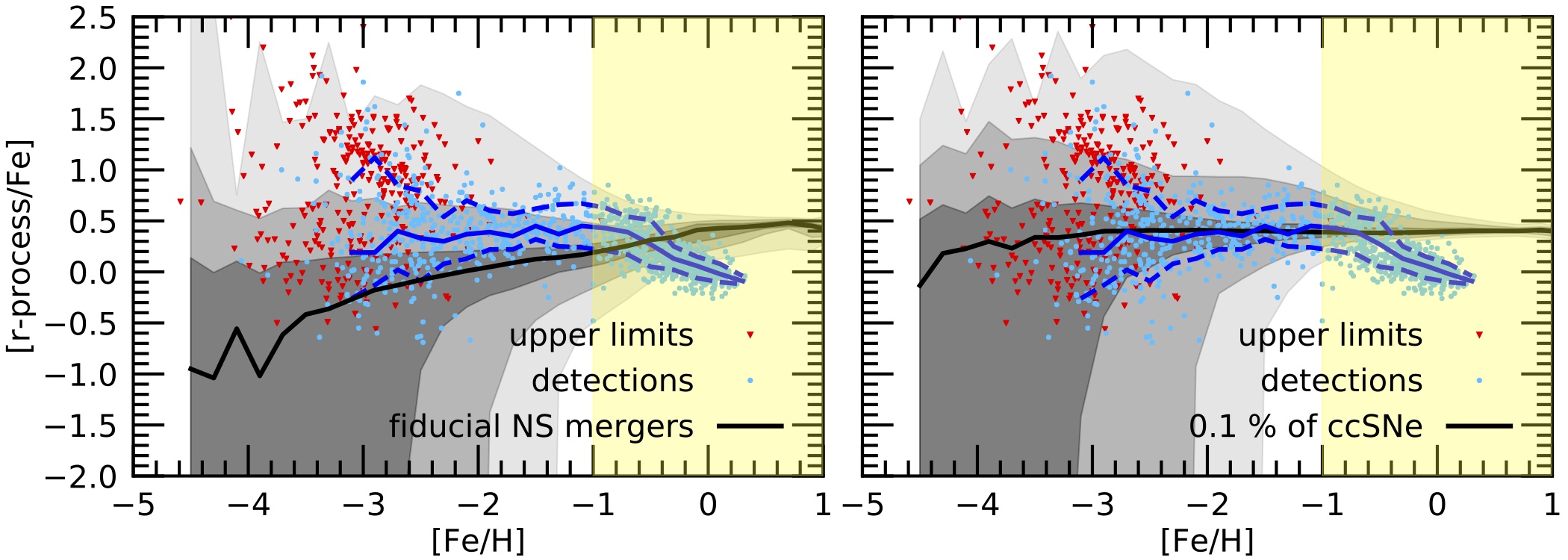Galaxy formation
My research focuses on understanding galaxy formation and evolution. For this purpose, I primarily use cosmological, (magneto)hydrodynamical simulations, but I have worked with observational data as well. I study the interplay between gas accretion and feedback and thus how galaxies grow. Within this field of research, I have worked on a range of topics (see also my publications). Below I describe the two areas to which I am currently devoting most of my time.
Circumgalactic medium
Galaxies are intimately connected to the environments they live in. The gaseous haloes arounds galaxies, the circumgalactic medium, is both the reservoir of gas that provides the fuel for galaxy growth and the repository of enriched gas expelled from galaxies by galactic outflows. Most cosmological, hydrodynamical simulations focus their computational effort on the galaxies themselves and treat the CGM more coarsely, which means small-scale structure cannot be resolved. We have therefore developed a new technique that adds uniform spatial refinement within the halo, increasing the resolution by 2 orders of magnitude for without a prohibitive increase in computational cost (van de Voort et al. 2019).
Shown below are some of the results for a standard simulation of a Milky Way-mass galaxy (left), one with additional 2 kpc spatial refinement (middle), and a simulation with 1 kpc spatial refinement added (right). The improved spatial resolution results in smaller dense clumps and more pronounced underdensities (top panels), but does not impact the central galaxy or the average density of the CGM (middle panels). However, it drastically changes the radial profile of the neutral hydrogen column density, which is enhanced at galactocentric radii larger than 40 kpc (bottom panels). We therefore conclude that simulating the circumgalactic medium accurately is vital for correctly interpreting at least some of its observational properties.

I am currently exploring turbulence and metal enrichment in a new simulation with 0.5 kpc refinement. These topics are still only the tip of the iceberg for what can be studied with these groundbreaking simulations, so stay tuned or feel free to contact me if you would like to get involved.
Chemical evolution
The flow of gas throughout cosmic time is responsible for setting the elemental abundances in present-day stars, together with the elemental yields from various production sites. Stellar abundances observed in the present-day universe (e.g. in the Milky Way and its satellites) can therefore be used to probe the metal production sites as well as the distribution and mixing of these metals throughout the universe at earlier times. Observations have revealed a large spread in rapid neutron capture (r-process) elements at low metallicity as well as striking differences between Milky Way satellites. To help figure out the origin of these elements, we have added 10 r-process production models to high-resolution simulations of Milky Way-like galaxies (van de Voort et al. 2020).
Below you can find results for two different rapid neutron capture element production sites: binary neutron star mergers (left-hand panel) and rare core-collapse supernovae (right-hand panel). Current (sparse and potentially biased) observations of metal-poor stars in the Milky Way seem to prefer rare core-collapse supernovae over neutron star mergers as the dominant source of r-process elements.

Although metal mixing is treated self-consistently in these simulations and our results are nearly perfectly converged, the r-process production models are highly simplified. I am planning to explore the effects of a metallicity dependence for r-process production, potentially resulting in more r-process sources in the early universe, and neutron star kicks, which will change how these elements are distributed. An improved multi-phase model for the ISM may also change how efficiently metal mixing occurs. Please let me know if you have a favourite r-process enrichment model you would like to test in a cosmological context.